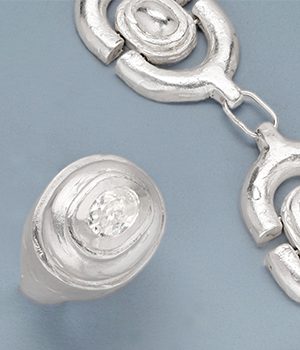Pearls of Wisdom with Laura Eyles
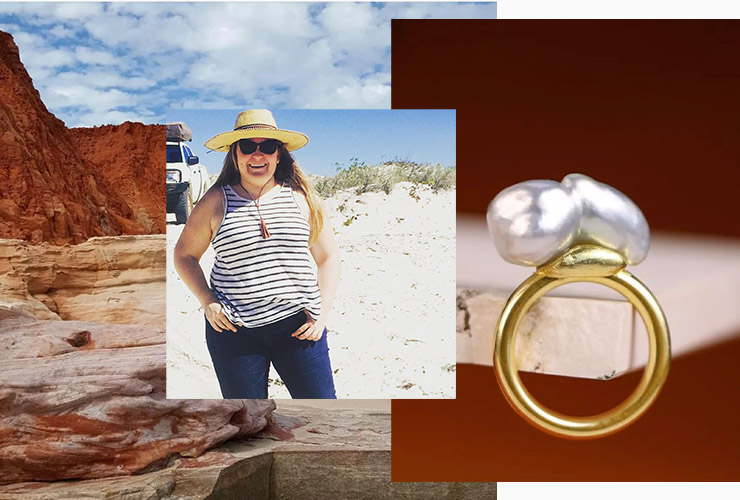
Artist and adventurer Laura Eyles spent four months working at Australia’s oldest South Sea pearl farm: home to some of the most coveted pearls in the world. She gained an in-depth understanding and appreciation of the cultured pearling process and experienced the incredible remote landscape of the Kimberley and the world famous waterways of the King Sound.
We invited Laura to share her in-depth knowledge of all things pearl …
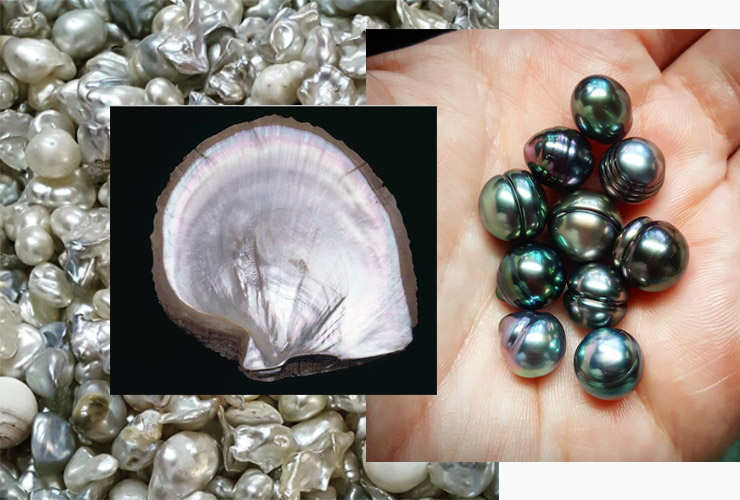
Types of Pearls
There are many different types of pearls, all differentiated depending on the region which they are grown, the shape, and method of growth. Some of these varieties include:
- South Sea Pearls – these pearls are from the Pinctada maxima oyster, which is the largest pearl producing oyster out there. As such, it produces some of the largest and highest quality / thickest nacre pearls, which is why they tend to be the most expensive.
- Tahitian Pearls – these pearls come from the Pinctada margeritifera oyster which are slightly smaller than the south sea pearl producing oysters. They are commonly described as ‘black’ pearls but should more aptly be described as a range of dark peacock, green, blue and and rainbow colourings.
- Akoya (Mikimoto) – these pearls were the kind that Mikimoto (the first man to culture pearls commercially) was the first to culture. They come in various sizes of small to medium and are all round in shape. They have a thinner nacre coating than their tahitian and south sea counterparts, why is why they tend to be round, as they mimic the size and shape of their nucleus.
- Freshwater – these can look very similar to South Sea pearls, the main difference being that they grow in a mussel, not an oyster, and instead of only growing one pearl to a shell, freshwater pearls often grow up to pearl 50 to a shell. This means they are often a more affordable option that a South sea or Tahitian pearl, as they are available in larger numbers.
- Mother of Pearl – this is the nacre component of the Pinctada maxima shells that pearls grow in, and forms in layers inside of the oyster as it grows in size.
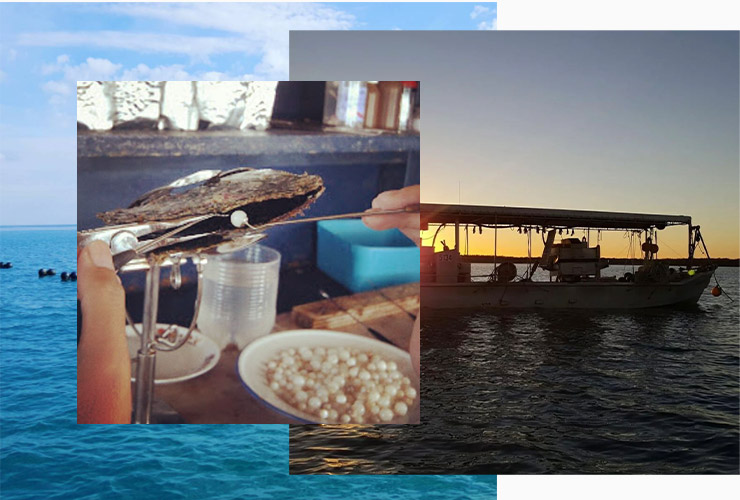
Pearl Farming
Pearls have naturally occurred in nature for as long as recorded history, however to find a natural pearl is actually very rare. Instead, nearly all of the pearls on the market are ‘cultured’ pearls which means they have been raised on a pearl farm.
Pearls occur when a small piece of debris gets caught inside the oyster or mussel which then acts like an irritant. The oyster secretes nacre in an attempt to flush it out or make it more palatable, and these layers of nacre is how a pearl is formed.
Cultured pearl farms develop these gems under controlled conditions in both saltwater and freshwater by inserting a nucleus into the mollusc. Farmers keep the oysters in sheltered bays with nutrient-rich waters where the molluscs feed and grow, coating the nucleus with layers of nacre and creating pearls.
To begin the process, first the farmers need to find what they call mussel and oyster ‘stock.’ This is done by divers who trawl the bottom of the ocean for mussels and oysters which they bring up to introduce to the gene pool in the farm. These mussels/oysters breed and the ‘spat’ (baby oysters) are collected and cared for. They spend a number of years growing spat to size.
Once they are of age, a pearling technician will make an incision in the pearl sack and insert a nucleus, which is usually a bead made of mother of pearl. The shells are then placed in panels and put out to sea, and a pearling crew clean and care for them for anywhere between 6 months (freshwater pearls) to two years (South Sea and Tahitian pearls).
When the pearls are harvested, they are then sorted and graded by the 5 virtues of a pearl.
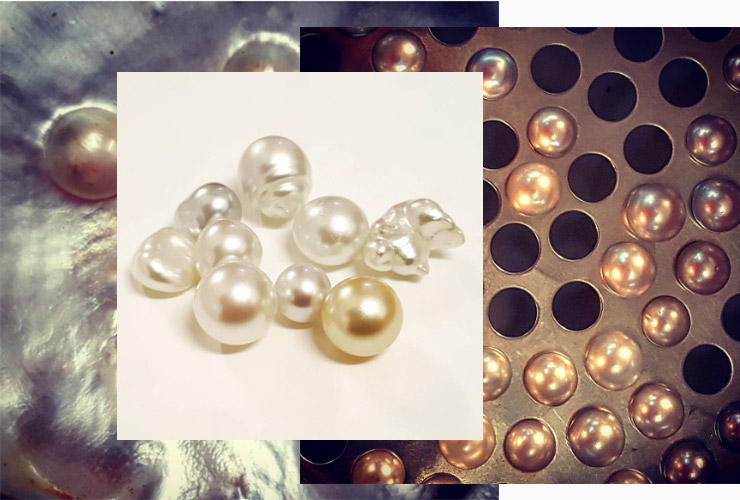
The 5 Virtues of a Pearl
When a pearl is sorted, these are the things one assesses when determining the desirability of the gem.
Shape: round, oval, drop, circle, baroque, keshi and mabe
A circle pearl differs to a round in that it has naturally occurring concentric lines running around it, whereas a round is a smooth sphere. Baroque and Keshi pearls can also be confusing, as they are both misshapen. The difference in that baroque has a nucleus in the centre, but a keshi pearl does not, and instead usually forms around a small piece of oyster meat or debris that has become trapped inside.
A mabe (ma-bay) shape is when the pearl is formed on the inside of the shell, which means it is usually half round in shape once it has been cut off the shell at harvest time.
Size: The size of a pearl is according to two factors: nacre thickness and/or the nuclei size. A healthy oyster will produce thicker coatings of nacre, but some large pearls may have a large nucelus in the centre with a thinner coating of nacre. Generally, the thicker the nacre the better the lustre, and more valuable.
South sea pearls, as they are from the largest oyster, are usually the largest pearls.
Lustre: This is the ‘glow’ of the pearl and is determined by the quality and thickness of the nacre. This is usually highest in South Sea pearls, however other pearl varieties can have very thick and high-quality nacres also.
Surface: When considering the value of a pearl, one with a flawless surface is considered the best. Some pearls can come out of the oyster with discolouration, pits or just dull areas on the nacre, so a glowing and consistent lustre is highly sought after.
Colour: All pearls can come in a large variety of colours. South Sea pearls can come in white, cream, silver, gold and pink. Tahitian pearls come in black, grey, green, blue and purple. Freshwater come in the same spectrum as South Sea, but as they are considered less expensive they are sometimes dyed to achieve a certain hue. In terms of value, it’s ultimately down to what each individual prefers.
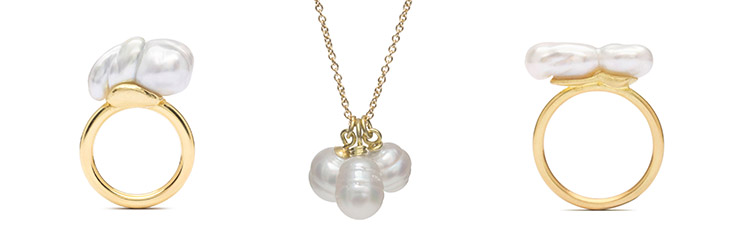
Shop Laura Eyles Pearl Jewellery
Images all courtesy of Laura Eyles

